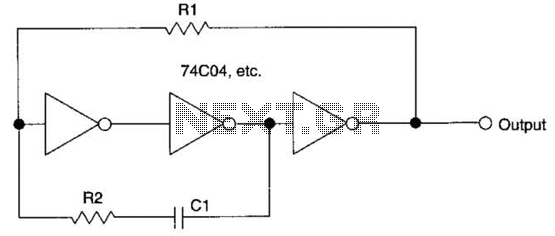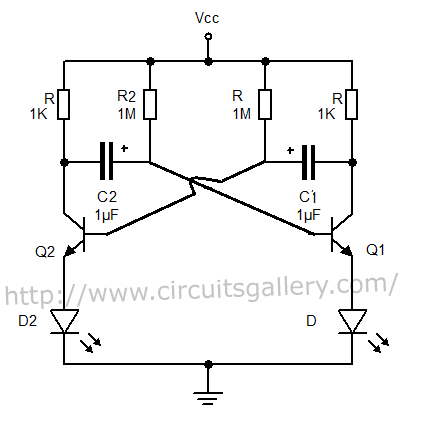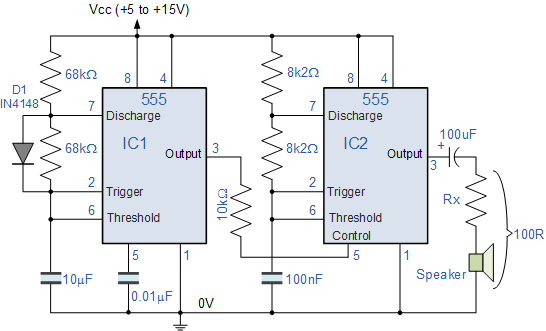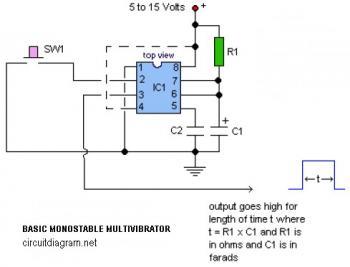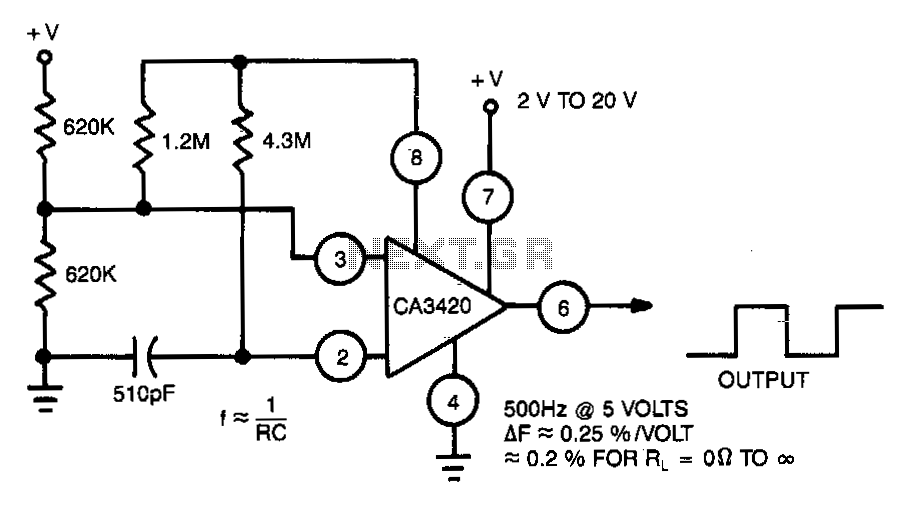
Bistable Multivibrator (Flip-Flop)
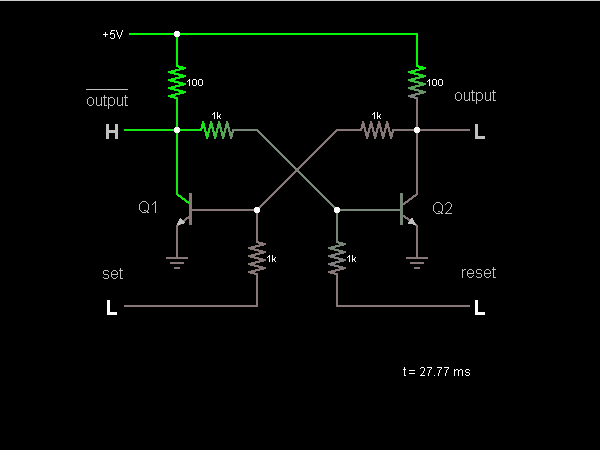
This circuit is a bistable multivibrator, commonly known as a flip-flop. Activating the "set" input located at the lower left corner will raise the output to a high state (5V). Conversely, engaging the "reset" input at the lower right corner will lower the output to a low state (ground). The transistors are interconnected in a manner that establishes two stable states. Initially, transistor Q2 is active while Q1 is inactive. As Q1 remains inactive, no current flows through it, resulting in its collector voltage being approximately 5V. This condition permits current to flow into the base of Q2, thereby keeping Q2 in an active state. Q2 operates in saturation mode, maintaining its collector voltage near ground level, which prevents any base current from reaching Q1, ensuring it remains off. Momentarily activating the "set" input supplies base current to Q1, turning it on and lowering its collector voltage. This interrupts the base current flowing to Q2, causing the circuit to switch to the alternate state. Activating the "reset" input returns the circuit to its original state.
The bistable multivibrator circuit utilizes two NPN transistors, Q1 and Q2, configured in a feedback loop that allows for two distinct stable output states. The operation relies on the cross-coupling of the transistors, where the collector of Q1 is connected to the base of Q2 and vice versa. This arrangement creates a condition where the state of one transistor directly influences the state of the other.
When the "set" input is activated, a positive voltage is applied to the base of Q1, causing it to conduct. As Q1 turns on, its collector voltage drops, which in turn removes the base current from Q2. Consequently, Q2 turns off, and its collector voltage rises to near 5V. The feedback mechanism ensures that Q1 remains in the "on" state as long as the "set" input is activated.
Conversely, when the "reset" input is triggered, it applies a positive voltage to the base of Q2, turning it on. The resultant drop in collector voltage for Q2 allows current to flow into the base of Q1, switching it off. This transition reinforces the stability of the current state until the inputs are altered again.
This flip-flop design is commonly used in digital circuits for data storage, state retention, and as a basic building block in memory devices and sequential logic applications. The simplicity of the circuit allows for easy integration into larger systems, making it a fundamental component in electronics. The design can be enhanced with additional features such as debounce circuits for input stability or LED indicators to visually represent the output states.This circuit is a bistable multivibrator, or flip-flop. Click on the "set" input at lower left to bring the output high (5V). Click on the "reset" input at lower right to bring the output low (ground). The transistors are cross-coupled in such a way that the circuit has two stable states. Initially, Q2 is on and Q1 is off. Since Q1 is off, no curr ent is flowing through it, and its collector voltage is close to 5V. This allows current to flow through into the base of Q2, which keeps Q2 switched on. Q2 is in saturation mode, keeping the collector voltage close to ground; this prevents any current from flowing into the base of Q1 to switch it on. If you click the "set" input momentarily, this provides base current to Q1, switching it on, bringing its collector low, which stops the base current flowing to Q2.
So the circuit switches to the opposite state. Clicking the "reset" input switches back. 🔗 External reference
The bistable multivibrator circuit utilizes two NPN transistors, Q1 and Q2, configured in a feedback loop that allows for two distinct stable output states. The operation relies on the cross-coupling of the transistors, where the collector of Q1 is connected to the base of Q2 and vice versa. This arrangement creates a condition where the state of one transistor directly influences the state of the other.
When the "set" input is activated, a positive voltage is applied to the base of Q1, causing it to conduct. As Q1 turns on, its collector voltage drops, which in turn removes the base current from Q2. Consequently, Q2 turns off, and its collector voltage rises to near 5V. The feedback mechanism ensures that Q1 remains in the "on" state as long as the "set" input is activated.
Conversely, when the "reset" input is triggered, it applies a positive voltage to the base of Q2, turning it on. The resultant drop in collector voltage for Q2 allows current to flow into the base of Q1, switching it off. This transition reinforces the stability of the current state until the inputs are altered again.
This flip-flop design is commonly used in digital circuits for data storage, state retention, and as a basic building block in memory devices and sequential logic applications. The simplicity of the circuit allows for easy integration into larger systems, making it a fundamental component in electronics. The design can be enhanced with additional features such as debounce circuits for input stability or LED indicators to visually represent the output states.This circuit is a bistable multivibrator, or flip-flop. Click on the "set" input at lower left to bring the output high (5V). Click on the "reset" input at lower right to bring the output low (ground). The transistors are cross-coupled in such a way that the circuit has two stable states. Initially, Q2 is on and Q1 is off. Since Q1 is off, no curr ent is flowing through it, and its collector voltage is close to 5V. This allows current to flow through into the base of Q2, which keeps Q2 switched on. Q2 is in saturation mode, keeping the collector voltage close to ground; this prevents any current from flowing into the base of Q1 to switch it on. If you click the "set" input momentarily, this provides base current to Q1, switching it on, bringing its collector low, which stops the base current flowing to Q2.
So the circuit switches to the opposite state. Clicking the "reset" input switches back. 🔗 External reference
